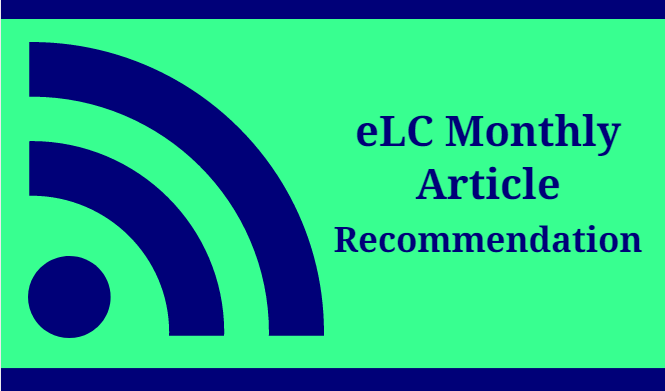Fourteen essential insights on the arrival of the metaverse in the world of education
18 May, 2022 Photo by Vinicius amnx Amano
Photo by Vinicius amnx AmanoThe emergence of this new technology may transform the learning process
A report on analyses and insights on the potential impact of the metaverse on the education sector has recently been put together by the UOC’s eLearning Innovation Center. It outlines the keys to understanding the impact that the arrival of the metaverse will have on education. Marc Cortés, the study’s author, provides a detailed description of this cutting-edge digital technology to understand the current context and the full potential of applying it in education.
The strong commitment to the metaverse shown by companies such as Facebook and Microsoft in recent months is indicative of the industry’s willingness to adopt this technology. A study conducted by The New Consumer in late 2021 concluded that 45% of Gen Zers feel most at ease online. Additionally, research by Wunderman Thompson showed that 76% of respondents said that their everyday lives and activities depend on tech.
The videogame industry heralded the current state of play and helped lay the foundations for the metaverse’s development. The videogame platforms to which millions of people connect on a daily basis have significantly contributed to the normalization of the use of avatars. Data for the Roblox online game platform show that its users aged 15 to 25 generate more messages within the platform than via WhatsApp.
This trend is now being witnessed in educational technology, a sector experiencing a moment of great transformation. Indeed, in the last two years edtech investment has grown threefold. In 2021, it amounted to more than 20 billion dollars, according to data from the Brighteye European Edtech Funding Report. The far-reaching impact that metaverse technology will have on the education sector needs to be considered. The study commissioned by the UOC offers the following 14 insights to contextualize the potential disruptive impact of the metaverse on the education sector:
1. Transition of content and environments: the digitization of the education process will take a step forward with the arrival of the metaverse. COVID-19 facilitated the move to hybrid educational processes and environments and, from now on, it will no longer be a question of developing or transforming content, processes and environments by applying a digital layer. The arrival of the metaverse is based on a paradigm shift that means moving from a hybrid or digital in-person process to a fully immersive educational process.
2. Improving the quality of learning, personalization and matching the student’s pace: the metaverse will affect this process because the students themselves will be able to explore immersive environments on their own. The analysis of data generated in these environments, coupled with artificial intelligence, may also contribute to designing a more customized learning process.
3. Leveraging the new, proven possibilities of virtual worlds: videogame platforms like Roblox, with more than 200 million unique users per month, exhibit dynamics and codes of conduct that can be imported to education. The platform has created a learning pathway aimed at students under the age of 18 on how to safely use the internet, and teachers are starting to include it in their own learning pathways.
4. From lecturing to gamification: the importance of introducing the concept of gamification into education is even greater with the metaverse. The use of immersive technologies makes the participant’s experience more intense and realistic.
5. Reaching a greater number of students: the larger the potential market, the easier it is for businesses to grow in it. The metaverse will make it easier to expand within the existing market, create a new market and create adjacent markets.
6. The gap between educational supply and the demand for talent: the metaverse and virtual reality technology are already being applied in corporate training programmes. Bank of America is one of the first companies to use it to train employees to virtually simulate their face-to-face interactions with clients.
7. The access challenge – digital and generational divides: the development of the metaverse requires significant investment in technological infrastructure. Any educational institution considering developing its learning resources and methods on the metaverse will have to take this into account if it does not want to make access and use more exclusive to some. The development of the metaverse will also make it necessary to understand immersive reality and virtual worlds. This poses a challenge for any educational institution planning to include participants of a certain age.
8. Redesigning educational environments: the first step towards introducing the metaverse in education has necessarily involved replicating physical infrastructure in a digital environment. We are currently in the environment replication phase, creating digital graphical representations of physical structures.
9. Transforming the role of student and teacher: the metaverse is ushering in changes in the role of students (they no longer simply receive content, but rather play a leading role) and of teachers (taking on the role of facilitators).
10. Understanding the new ways of capturing attention: in 2003, Stanford University set up the Virtual Human Interaction Lab, a research centre focused on understanding the psychological and behavioural effects of augmented reality. This experience has raised questions about what triggers participants’ attention in the learning process.
11. Tackling assessment and monitoring challenges: the metaverse will have a direct impact on participant assessment and monitoring processes. This makes it necessary to redefine assessment criteria, taking into account that the metaverse affects how participants’ evolution is determined. It also raises questions about privacy and, finally, it will be necessary to predict how teamwork will evolve.
12. New partners in education: the education sector may take two routes into the metaverse: an adaptation model, in which the content and methodology of educational models are adapted to metaverse technology, or a transformation model, thanks to the creation of ecosystems made up of universities and other educational institutions, businesses and tech companies.
13. Setting standards: several big tech companies have set their sights on this technology, but the outcome of these ventures will depend on whether their development is based on uniform standards or whether each company creates its own.
14. Interoperability, blockchain and non-fungible tokens: interoperability is one of the major challenges in the metaverse ecosystem. Ensuring that all digital assets created in a metaverse can be used in another will undoubtedly be one of the keys to its uptake.
The metaverse’s potential in education is enormous, as borne out by this list of insights. However, it remains to be seen how this technology will change over time and what its role will be in tomorrow’s learning processes.
This report is part of the UOC’s commitment to achieving United Nations Sustainable Development Goal (SDG) 4, Quality Education.






